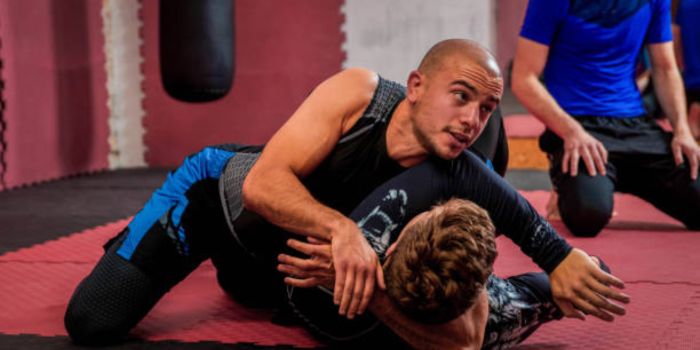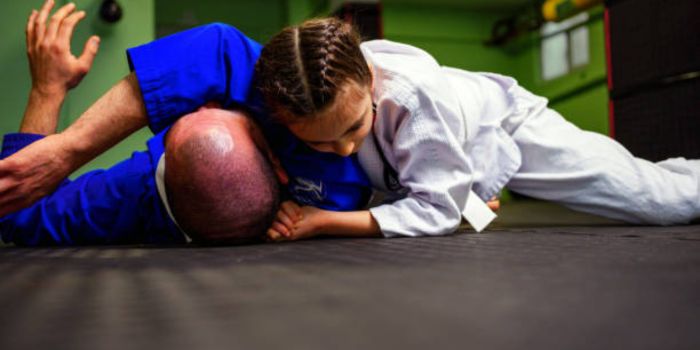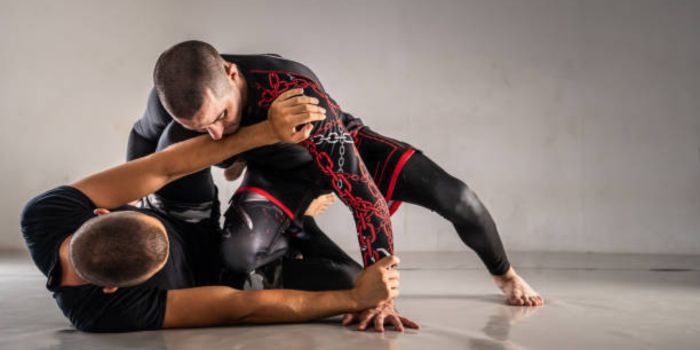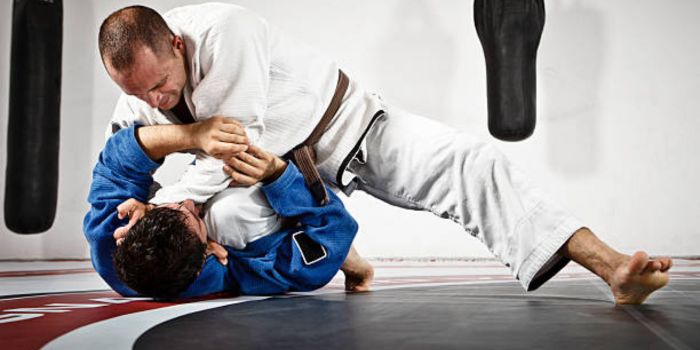Brazilian Jiu-Jitsu, or BJJ, is a martial art that focuses on ground fighting and submission holds. It emphasizes the ability to control an opponent through techniques that force them to submit and one of the technique is side guard. As a practitioner of this dynamic sport, I’ve come to appreciate the intricate positions and maneuvers that BJJ offers. One of the foundational elements of BJJ is the use of guards. Which also contains a side guard. These positions allow a fighter on the bottom to protect themselves and set up attacks against an opponent on top. There are various guards, each with unique advantages and strategies, and understanding them is crucial for any serious BJJ student.
The guard BJJ serve multiple purposes: they are defensive mechanisms, offensive setups, and transitional platforms. As one begins their journey in BJJ, they quickly learn that the guard is not a singular position but a complex web of options and reactions. The guard is where the chess game of grappling truly unfolds, and it is in this intricate dance that victories are often forged.
Through my experience, I’ve discovered that the guard is not just a position but a philosophy of fighting from the bottom. It embodies the core principle of BJJ: using leverage and technique over brute strength. By mastering the guard, particularly the side guard, one can control and submit opponents who are larger and stronger. This is the beauty of BJJ, and it’s what draws countless individuals to the mats every day.
Understanding the side guard in Brazilian Jiu-Jitsu
The side guard, commonly known as side control, is a dominant position in BJJ where you control an opponent from the side of their body. Unlike the full guard, where the bottom person encloses their legs around the top person, the side guard bjj involves the top practitioner using their weight and limbs to pin the bottom player to the ground, limiting their movement and ability to escape.
This position offers a myriad of offensive opportunities, including joint locks and chokes. From here, one can transition to more dominant positions like mount or back control, or catch the opponent in a submission attempt. The jiu jitsu side guard is a testament to the principle of control that underlies BJJ; by securing a strong side position, a practitioner can dictate the flow of the match and impose their game plan.
My experience with the bjj side guard has taught me that it is both a fortress and a launchpad. It provides security from the opponent’s attacks while offering a strategic vantage point from which I can launch my own. To truly understand this, one must recognize its dual nature and the balance required to maintain control while seeking openings for advancement or submissions.

The importance of mastering this in BJJ
Mastering this is essential for any BJJ practitioner seeking to excel in the sport. It is a position that offers control and safety from the opponent’s attacks, making it a crucial aspect of one’s defensive game. Furthermore, It is a key transitional point that can lead to higher control positions or submissions, which makes it an important offensive tool as well.
The importance of it is further magnified when considering its psychological impact. Achieving and maintaining a solid side position can be demoralizing for the opponent, as it signifies a loss of control and an increased vulnerability to attacks. This mental edge can be as valuable as the physical control the position provides.
In my training and competition, I’ve found that a well-executed side guard can be the difference between victory and defeat. It is a position that requires patience and precision, and those who dedicate time to perfecting it often find themselves ahead of their peers. This is not just a position; it’s a statement—a declaration of one’s intent to dominate and succeed on the mats
Techniques and strategies for it in Brazilian Jiu-Jitsu
Having a solid base and understanding of weight distribution is paramount. The key is to apply constant pressure on the opponent, making it difficult for them to move or create space to escape. This involves using your shoulder to apply pressure to their face or neck, which is known as shoulder of justice, and keeping your hips low to the ground to maximize control.
Submissions from this are numerous and include Americana locks, kimuras, arm triangles, and paper cutter chokes, among others. Setting up these attacks requires a combination of timing, precision, and the ability to anticipate your opponent’s reactions. Each submission has its setup, and learning these intricacies takes practice and experience.
Transitions from this to other positions such as mount, knee on belly, or even taking the back are also critical components of a well-rounded game. These movements must be drilled repeatedly to become second nature, allowing for smooth transitions during live rolling or competition. It is a dynamic position, and being able to flow from one attack or control point to another is the hallmark of a skilled practitioner.
Credits – Central PA Mixed Martial Arts
Common mistakes to avoid
It’s easy to become complacent, leading to a loss of position or being caught in a submission. One common mistake is failing to control the opponent’s hips, which can allow them to regain guard or escape. Maintaining tight control and being aware of the opponent’s attempts to move is crucial.
Another frequent error is neglecting to manage the distance between you and your opponent. Too much space can provide them with the leverage needed to escape or initiate their own attacks. Practitioners must strive to stay connected to their opponent, using their body weight effectively to prevent any movement.
Lastly, not being aware of one’s own limbs can lead to vulnerabilities. For example, leaving an arm extended can give the opponent an opportunity to attack with an armlock or reversal. It’s important to keep limbs close to the body and to use them purposefully when applying pressure or setting up submissions.
Transitioning from other guards to this in BJJ
Transitioning from other guards to this guard is a pivotal skill in BJJ. From the full guard, a common way to transition to the side is by using a sweep or a reversal. This requires unbalancing the opponent and using the momentum to flip them over, landing in this guard. From the half guard, one can use an underhook to create space and slide into side control.
Another key transition is from the top position in the full guard. By passing the opponent’s legs and moving around their defenses, one can establish side control. This pass can be achieved through various techniques such as the knee slice, double under pass, or the bullfighter pass.
Understanding how to transition smoothly between guards is essential as it opens up more opportunities to control and submit the opponent. It also makes for a more unpredictable and versatile game, as opponents will have to defend against a wider array of attacks and movements.

Counterattacks and submissions
This is not only for control but also for launching a series of devastating counterattacks and submissions. One must always be on the lookout for opportunities to apply submissions such as armlocks, shoulder locks, and chokes. It’s important to recognize when an opponent is vulnerable and to have the technical ability to capitalize on these moments.
Submissions like the Americana and kimura can often be set up by waiting for the opponent to push against you, providing an opening to attack their extended arm. Chokes such as the arm triangle can be applied by manipulating the opponent’s arm across their neck and securing the choke with your arm and body positioning.
Being able to transition between these attacks fluidly is key to maintaining pressure and keeping the opponent on the defensive. The threat of submissions from it forces the opponent to react, which can lead to mistakes that open up further opportunities for attack.

Drills and exercises to improve
To improve one’s game, consistent drilling and specific exercises are essential. Drills that focus on maintaining pressure and control to help develop the muscle memory required to hold the position under resistance. Partner drills where one person tries to escape while the other maintains control are particularly effective.
Solo drills can also be beneficial, especially those that enhance hip mobility and core strength. These attributes are vital for maintaining balance and applying pressure on it. Exercises like hip escapes, bridges, and core-strengthening movements should be incorporated into one’s training routine.
Additionally, positional sparring, starting from this, allows practitioners to focus on this aspect of their game. This type of sparring helps to identify weaknesses and areas for improvement in a controlled environment, allowing for targeted development of one’s of this skills.

Conclusion
Embracing it in BJJ is about recognizing its potential as a pivotal aspect of the sport. It is a multifaceted tool that offers control, offensive opportunities, and a path to victory in both training and competition. It is a testament to the effectiveness of technique over strength and a cornerstone of the BJJ philosophy.
FAQ’s
What is side guard Jiu Jitsu?
In Jiu-Jitsu, it is also known as side control, refers to a dominant ground position where one practitioner is lying perpendicular to their opponent, controlling them from the side. This position allows for various submissions and transitions while restricting the bottom player’s ability to attack.
What is a guard in Jiu Jitsu?
In Jiu-Jitsu, a guard is a position where one practitioner uses their legs to control an opponent while lying on their back or side. Guards are defensive postures that can be used to prevent an opponent from passing to a more dominant position and serve as a platform for launching attacks.
What to do in Side Mount BJJ?
When in side mount, also known as side control, the top practitioner should focus on maintaining pressure, controlling the opponent’s hips and shoulders, and preventing them from escaping. From this position, one can attack with various submissions or transition to more dominant positions like mount or back control.
How do you get into side control?
Getting into side control can be achieved by passing the opponent’s guard—getting past their legs—and moving to the side of their body. This can be done using techniques like the knee slice pass, the double under pass, or by utilizing a sweep from the bottom to reverse the positions.
What is Jiu Jitsu's weakness?
Jiu-Jitsu weaknesses generally refer to vulnerabilities in a practitioner’s game, such as a lack of flexibility, poor cardio, or a deficiency in certain technical aspects like guard retention or submission defense. As a complex and comprehensive martial art, continuous improvement in all areas is crucial for success.
If you enjoyed this blog, consider checking:
Recent Posts
- Mastering the BJJ Guard: Types, Techniques and Strategies
- Master the Art of Dead Orchard BJJ
- BJJ vs Kung Fu: A Comparative Analysis
- Master the Loop Choke: Essential Tips for Success
- Complete Guide To The Lasso Guard BJJ
- 10 Best Strength and Conditioning Workout Exercises for BJJ
- Mastering the Twister in BJJ: A Comprehensive Guide
- Unlock Your BJJ Potential with Side Guard Mastery
- Knee Shield BJJ: Mastering Defensive Techniques
- Master the Art of Smash Pass in Easy Steps!


